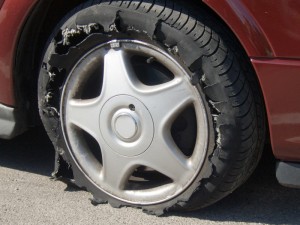 As families hit the road for summer vacations, they are often setting themselves up for a tire blowout and a potentially deadly accident. Summer heat increases the likelihood of a blowout. Long drives at high speeds, such as traveling on the Interstate, cause tires to heat up even more. And many families travel in RVs that they only dust off once a year, meaning that the tires may be old, improperly inflated, or even the wrong tires for the vehicle.
As families hit the road for summer vacations, they are often setting themselves up for a tire blowout and a potentially deadly accident. Summer heat increases the likelihood of a blowout. Long drives at high speeds, such as traveling on the Interstate, cause tires to heat up even more. And many families travel in RVs that they only dust off once a year, meaning that the tires may be old, improperly inflated, or even the wrong tires for the vehicle.
Do Your Tires Need to be Replaced?
Start with a visual inspection looking for cuts, slashes, bulges, uneven wear, and adequate tread. Tread depth should be more than 1/16 of an inch. You can do the penny test, by inserting a penny into the tread with Lincoln going in head first. If you can see the top of his head, you need new tires.
Now, on vehicles that don’t get regular use, tires can pass a visual inspection with flying colors and still be ready to blow. Tires age just like we do, but faster. Some manufacturers say their tires are good for up to six years, others claim as many as 10. We recommend erring on the side of caution. To check your tires’ age, look for the four digit DOT code. The first two numbers stand for the week and the second two stand for the year in which the tire was made. Tires made before 2000 use a different type of code and if your tires were made before 2000, they are definitely too old.
Proper Inflation
Once you’re sure you don’t need new tires, you have to check for proper inflation. The recommended tire pressure should be stated on the tire itself. That’s for a cold tire, meaning one that hasn’t heated up from driving.
You need to check the pressure before you leave the house. If it is too low, write it down. Then when you get to the service station to add air, take the pressure again. It will be higher. Subtract the difference between the two from the recommended pressure to get the correct pressure for your tires now that they are hot.















